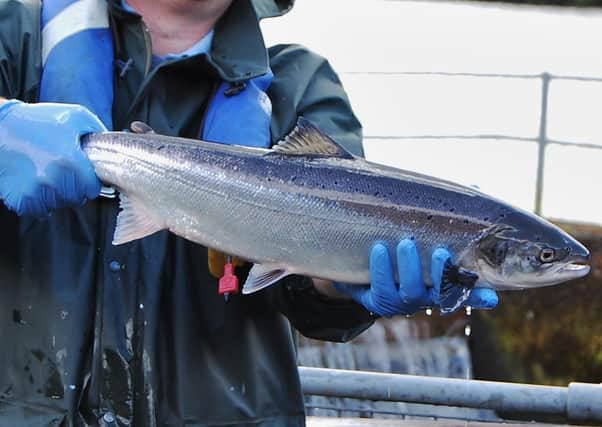Agri-Food Biosciences Institute’s mission to “Follow that Fish”


Within this theme, largely funded by the Department of Agriculture, Environment and Rural Affairs (DAERA), AFBI has an extensive programme of work focussing on aquatic life, including investigations of the sustainability of fishing both at sea and in fresh waters.
This work is essential to enable AFBI to advise local, national and international policy makers in the areas of stock migration, conservation and management. To deliver on this, AFBI’s Fisheries and Aquatic Ecosystems team have invested significantly in recent years in new technology to track individual fish in freshwater and marine systems across space and time. The data which is now being collated and analysed is providing new and detailed knowledge of fish ranging, migration and survival over critical periods of the lifespan of some key species.
Advertisement
Advertisement
Using a small acoustic (Ultrasound) transmitting tag which is attached to individual fish in the wild the migration patterns of these fish can be monitored in real time for periods of months to years.
Signals from the tags are picked up by listening stations (receivers) in the water which record the signals from fish as they pass within a 400m range. Furthermore, the technology has the ability to provide information on the depth and temperature of the water and when a fish is eaten in the water by a predator.
Alternatively, a passive tag system, which detects fish as they pass a scanner, is also being deployed to monitor salmon as they migrate downstream to sea through the River Bush salmon station and as they return to breed a year later.
Key areas of work which these tracking systems are being used for include: 1. measuring the survival of migrating salmon, sea trout and eel passing down rivers and through lakes to the marine phase of their lives and 2. tracking freshwater trout and bream in lakes and rivers, recording their annual migrations between feeding and spawning areas, when they are eaten by predators and monitoring their survival rates over time.
Advertisement
Advertisement
AFBI works extensively with international partners through the COMPASS and SeaMonitor projects, which are both assisted by EU INTERREG VA funding through the Special EU Programmes Body. These partnerships have extended AFBI’s work far beyond Northern Ireland’s freshwater systems and expanded salmon and sea trout tracking to international arrays of receivers at sea.
This internationally funded dimension has established key pathways for a number of species, i.e. the data has informed us of eels leaving the River Bann heading west past North Donegal on their journey to the Sargasso sea breeding grounds, young salmon up to 250 km out into the Atlantic ocean from the rivers feeding into the Irish Sea, and Sea trout from Irish east Coast rivers travelling 50Km or more to use feeding areas ranging from the Boyne estuary to Strangford Lough.
Widely travelled fish clearly know no borders and these observations show the benefits of working with international and cross border partners to ensure coverage of the full ranges used by shared species.
This new data allows AFBI to comprehensively advise fishery policy makers in NI, across the UK and internationally on the ranges of water area used by individual species, survival rates over time, natural and human impacts, and the need for appropriate management plans to cover critical migration pathways and the range of habitats used by each species.